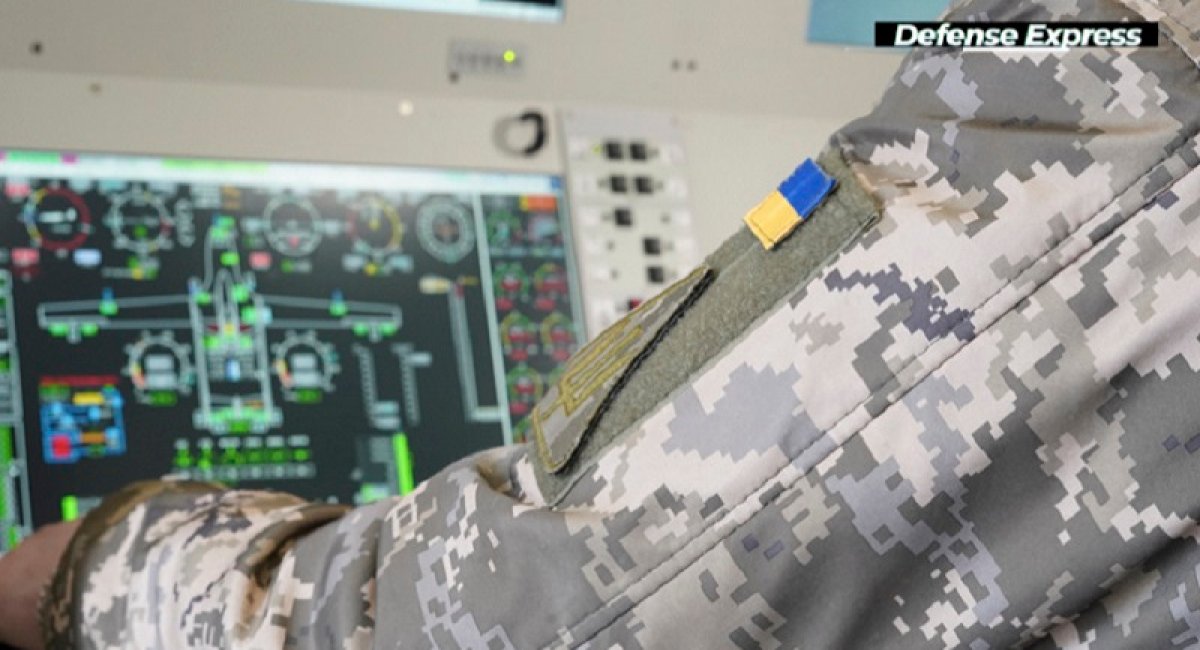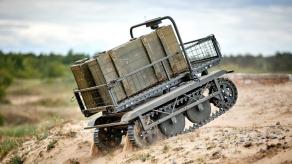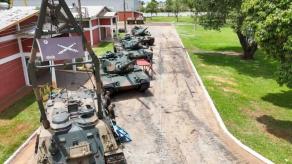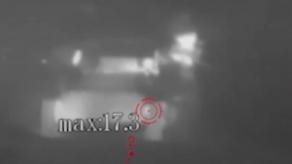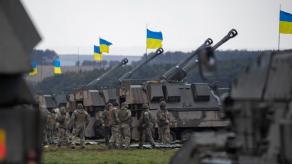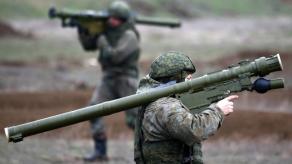The Major powers are most active in this realm, and Ukraine, too, seeks to keep pace with current technology trends going on in UCAV world. The country has developed and built a range of new-gen UCAV systems, both by itself and in collaboration with international partners.
High-intensity hostilities ongoing in eastern Ukraine due to Russia’s military incursion revealed the need not only for gunfire spotting drones and spy drones, but also for armed UAVs for defeating armored or hard-to-access targets on the ground. Prior to 2017-2018, the core of the Ukrainian military’s drone inventory consisted of spy drones of both foreign and domestic brands. But this situation is changing now as the Ukrainian army has added to its arsenal its first UCAS, purchased from Turkey, and domestic companies have began offering their proprietary solutions that are properly optimized for modern battlefield environments.
Read more: Turkish Aselsan Radios for Ukraine successfully passed the inspection of the state service of special communication and information protection
Thus, Ukraine, in early 2018, purchased from Turkey one unit of the medium-altitude long-endurance (MALE) Tactical Unmanned Aircraft System (UAS) Bayraktar TB2. Each Tactical UAS is configured with six aerial vehicle platforms, two Ground Control Station (GCS) vehicles, three Ground Data Terminals (GDT), two Remote Video Terminals (RVT) and Ground Support Equipment. The Bayraktar TB2 contract additionally includes Roketsan MAM-L’ laser-guided munitions as well as localization of part of Bayraktar TB2 manufacturing processes in Ukraine.
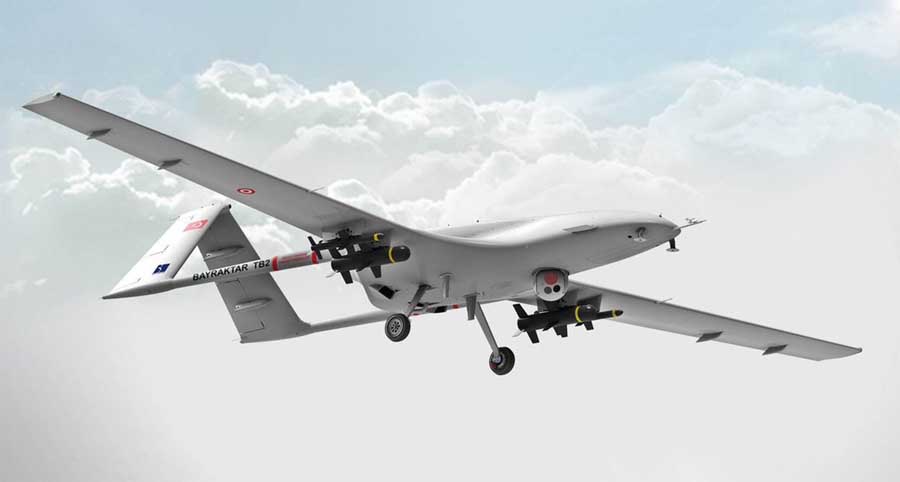
With its 560 kg MTOW and payload capacity of 55 kg, Bayraktar is capable of loitering for more than 24 hours, at altitudes up to 27,000 feet (8,200 m), transmitting live video footage over ranges up to 150 km. The laser-guided Roketsan MAM-L Smart Munition can defeat targets at ranges from 500 m to 8 km, with a miss distance not exceeding 1 m. TB2 marks the first armed UAV system to have been operationally deployed with Ukraine’s Armed Forces.
It’s worth of note that PJSC "Chernihiv Radio Equipment Plant" (otherwise known as PJSC "CheZaRa"), NVO Practika, Kyiv, and WB Electronics, Poland, collaboratively developed and demonstrated an improvement to their unmanned aircraft system Sokil (meaning “Falcon” in Ukrainian), which is designed to perform the dual role of tactical ISR and air-to-ground attack.
Sokil consists of two UAVs associated with a shared ground control station.
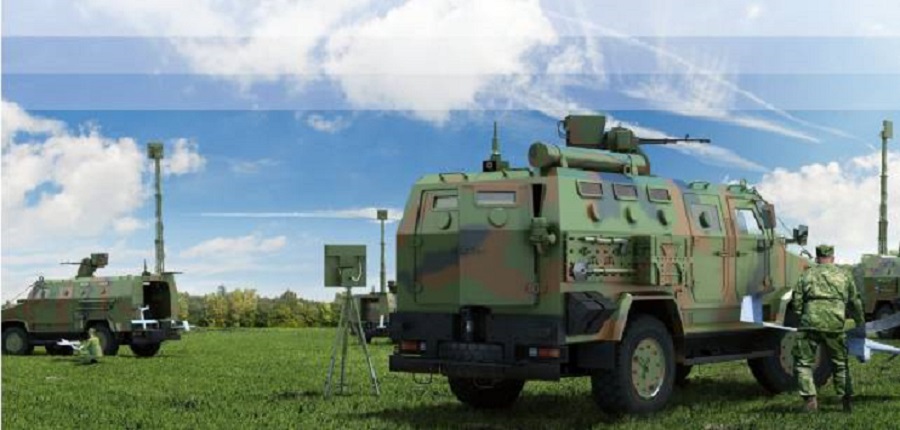
One is Fly Eye UAV system, which is intended to provide advanced aerial reconnaissance capabilities to deployed forces. Equipped with daylight and IR camera sensors and with a function for return-to-launch-site (RTLS) in the event of GPS loss or denial, it would perform observation, surveillance, and target search roles and find out location coordinates of the targets detected. The drone can loiter for 120-180 min within a 50-km radius, at altitudes of up to 1,000 m. The Fly Eye collected intelligence output is then communicated via secure data links to its associated ground control station for mission setting to the other member of the tandem – the suicide Kamikaze drone Warmate. The loitering munition drone allows several different types of warheads to be installed, depending on specific mission needs; it can engage targets at ranges up to 30 km. The warheads, ranging from 530 g to 1,350 g TNT, are of explosive fragmentation, high-explosive fragmentation, penetration, and incendiary types.
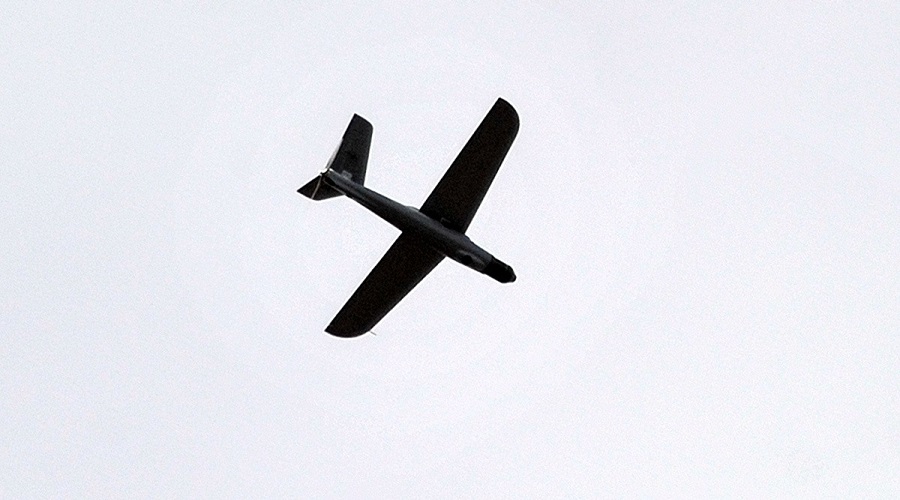
The full system is ground transportable in several Practika Kozak-2M armored vehicles.
Sokil has been tested and tried out successfully by Ukraine’s Armed Forces, but is as yet awaiting to be allowed into service.
At the 3rd edition of IMEX-2018 International Unmanned Systems Exhibition & Conference held in Abu Dhabi, UAE, from 25 to 27 February 2018, Defense & Electronics Technology Company (CDET) LLC, Kyiv, unveiled its latest UAV/loitering munition drone named RAM.
RAM UAV is meant to search and attack air defense batteries and armored targets to be located in the target area on land or at sea.
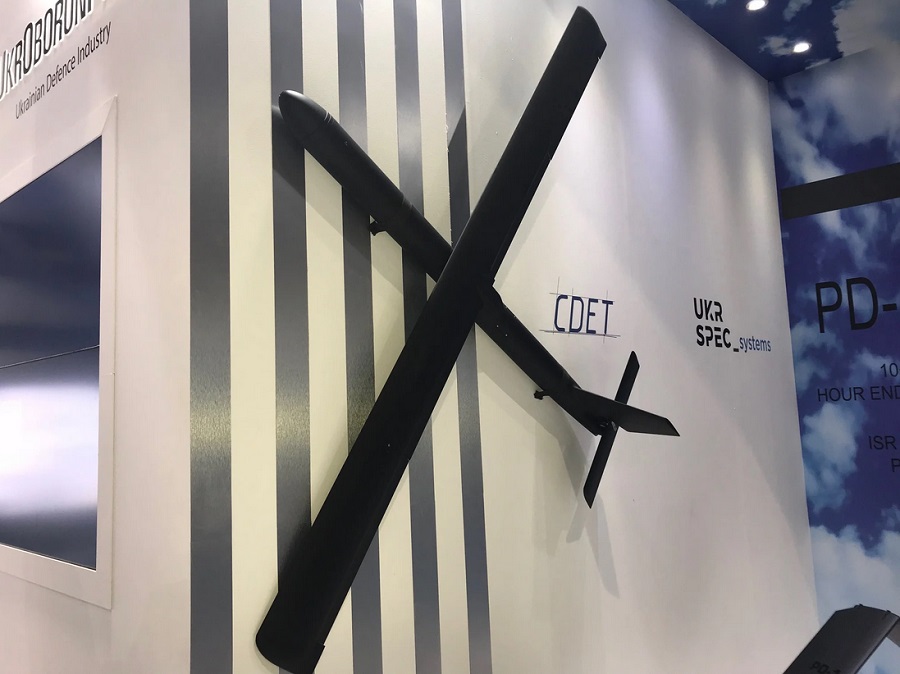
The RAM drone is built with extensive use of composite materials, which its designer claims makes it very low-observable to enemy air defenses. Propelled by a low acoustic signature electric motor, the drone can covertly attack by surprise, even from a short distance from the target.
An electric motor enables it to loiter within a 30 km radius at 70 km/. Launch is catapult assisted.
The drone takes only 10 minutes to go from unpack to launch. It can stay aloft for up to 40 minutes, which is quite enough to get a target detected and destroyed by lethality.
The RAM UAV has an integral flight controller capability supporting the functionality that includes autonomous preprogrammed flight, live video streaming, and guiding the munition to a target once it is located.
The munition comes with three options for warhead depending on the types of targets to be attacked:
- fuel-air explosive (FAE) warhead will be used to defeat enemy personnel sheltered in buildings or field fortifications, and to destroy light armored vehicles with crews and infantry passengers;
- High Explosive Anti-Tank (HEAT) warhead will be used against armored targets on land or at sea;
- High Explosive Fragmentation (HEF) warhead will be used against personnel targets encountered in open-area engagements.
RAM has been successfully tested in real-world combat engagements against Russian-sponsored separatist rebels in Eastern Ukraine, and showed very high immunity against enemy jamming attempts.
At the Arms & Security 2019 Expo, R&D and Production Corporation Athlone Avia unveiled the first release of its loitering munition drone ‘Hrim’ (Ukrainian for “Thunder’).
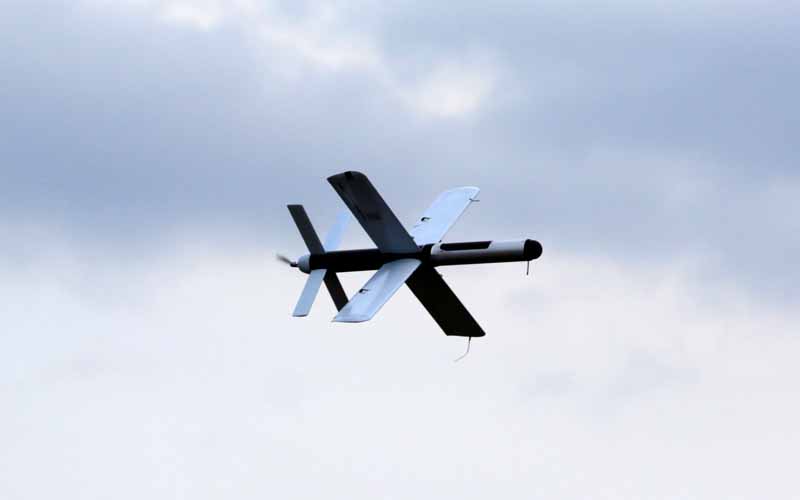
Hrim is of a biplane design with two sets of X-shaped control surfaces on a front fuselage extension mounting an EO guidance system. This design enables an optimum between the controllability performances of the drone while in horizontal flight and in diving at the target, the Developer has said.
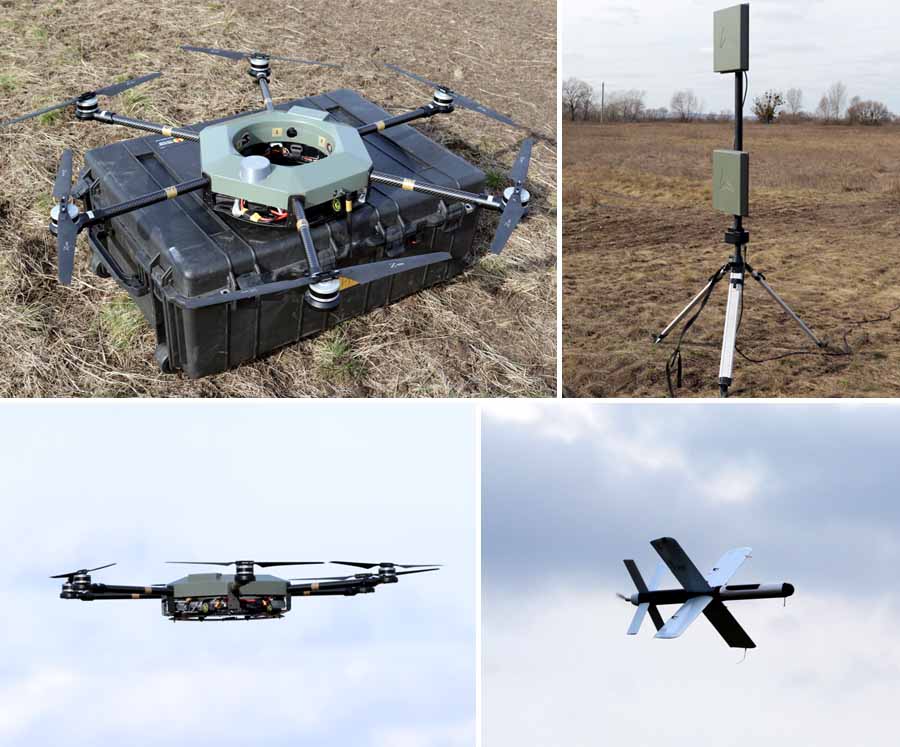
There is a multirotor aerial vehicle used as launch platform for the drone Hrim. The multirotor vehicle would lift the drone up to 500 m altitude from where the latter would separate and begin flying to the target area. The multirotor would then ascend to ~1,000 m and stay there to act as a transmission relay and to verify target hit. This altitude is high enough for sustained video streaming from the drone at ranges of 30-40 km. Designed with a take-off weight of 10 kg, including a 3.5kg warhead payload, the drone will be able to loiter aloft for up to 60 min.
The munition will be guided semi-automatically by television or IR guidance heads, which will be swappable as needed depending on the visibility and weather conditions.
This loitering munition is special in that it is being developed with a GPS-independent navigation capability, meaning it would be capable of fulfilling its mission objectives even in severe EW jamming environments.
The munition will be available with warheads of several different types and weights. Work is now underway on a FAE warhead weighing 10 kg, but other warhead types, including inter alia HEAT and HEF are also under consideration for this application.
Hrim has now reached the stage of factory flight trials and is being prepared to enter official qualification trials process that is potentially leading to Approval for Service Use.
The year 2019 also saw the release of next evolution to Ukraine’s renowned spy drone People’s Drone PD-1 -- a modular unmanned aerial vehicle platform developed by The People's Project -- Ukrainian Nationwide Volunteer Center in collaboration with UkrSpecSystems.
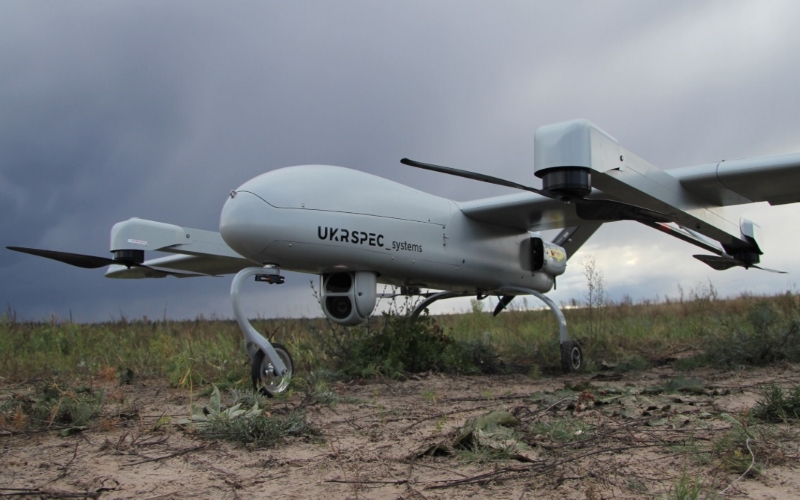
Initially developed in a fixed-wing configuration for ISR roles, PD-1 was, in 2018, redesigned to add a ground attack capability along with a VTOL capability to enable the drone to take off like a quadcopter.
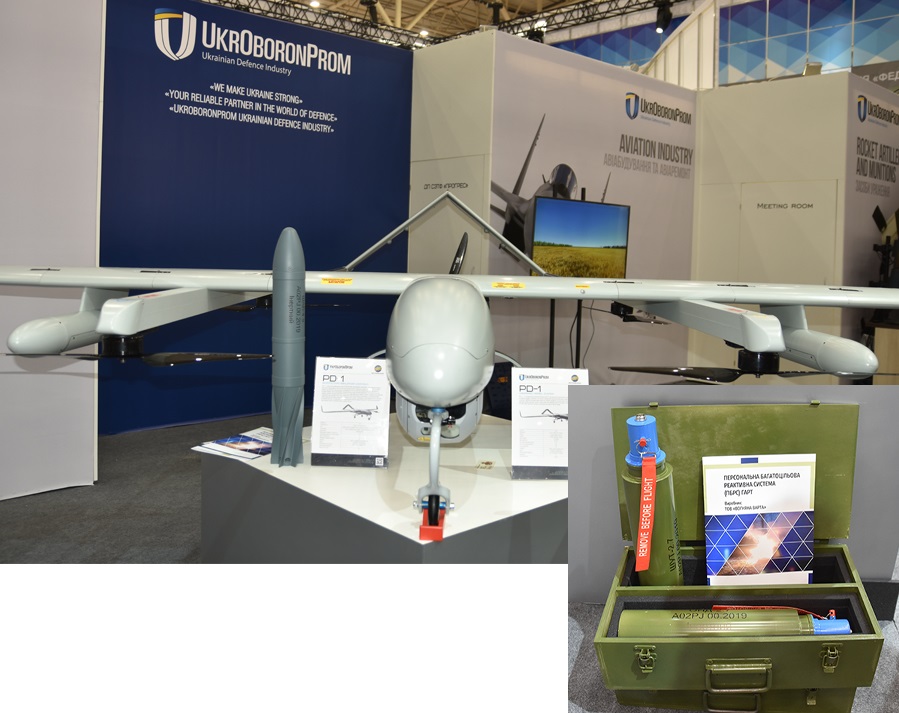
This new iteration of PD-1 features a new, more powerful engine and a 8-kg payload package comprising two loitering munitions, each armed with a 3 kg warhead and designed to be deployable from hardpoints on each of the wings.
In its most recent configuration, the PD-1 drone is able to endure flight durations of up to 5 hours, at altitudes of up to 2,000 m.
At 1,000 altitude, miss distance would be in the range of 10 m, depending on whether the munition is fitted with capabilities for precise targeting and in-flight trajectory update.
In addition to UCAV technologies listed above, mention should also be made about the future short-range tactical UAS ‘Horlytsia’ (Ukrainian for ‘dove’) that is being developed by SE Antonov. The UAV was flight tested in October 2017 after having succeeded through survivability and wind tunnel trials.
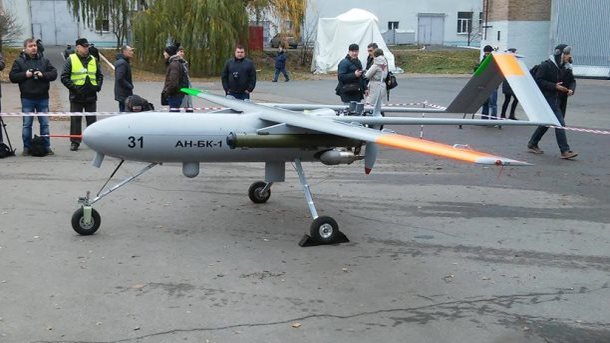
Horlytsia is designed with a nonstop flying range of 1,050 km, an operational combat radius of 80 km, and a maximum in-air endurance of 7 hours.
Antonov says it is now working collaboratively with the Design & Development Company Luch, Kyiv, to equip Horlytsia with lightweight missile weapons, which would bring it into the category of tactical UCAS.
As of the end of 2019, the Hortysia UCAS project is still in progression.
Conclusion Notes
The onset of Russian military intrusion in Eastern Ukraine had driven a surge in development of UAS technologies meeting the requirements of defense and public safety customers in Ukraine. Within a few years there emerged a varied range of UAVs equipped primarily for ISR and gunfire spotting roles. But real-world experience with their use in combat operations, along with a growing requirement for capabilities to defeat and destroy ground targets, especially in urban and built-up operational settings like in Eastern Ukraine’s Donbas necessitated an expansion of the range of missions for military UAVs. This has resulted in the emergence of a range of precision attack drones capable of destroying enemy targets with minimum risk to nearby civilian lives and infrastructure. Although many of them are still in the stage of development and testing, they hold the promise of being adopted by the Ukrainian military to bolster its warfighting capability.
Hryhory KUSHCHELEP
Read more: Vladyslav Belbas: "We are currently more than just a manufacturer of armored vehicles"



